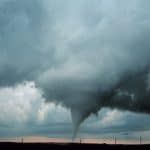Settling the Iranian nuclear issue
By Dingli Shen | May 21, 2007
The first step to a fair and equitable solution–the United States and Iran both admitting that they can’t have everything they want.
Today, the world worries about two potential nuclear proliferators: North Korea and Iran. North
Korea declared that it conducted a nuclear test late last year, but its claims remain unconvincing.
Meanwhile, Iran says that it does not intend to develop nuclear weapons. Nonetheless, many believe
that Tehran’s nuclear development is suspicious.
Iran belongs to the Nuclear Non-Proliferation Treaty (NPT) as a non-nuclear weapon state, which
prohibits Tehran from developing nuclear weapons while it’s a signatory to the treaty. Accordingly,
Iran must report any significant nuclear activities to the International Atomic Energy Agency
(IAEA). By honoring this obligation, Iran’s nuclear record remains clean, and it can continue its
pursuit of nuclear power.
However, the IAEA has concluded that Iran has not reported its past nuclear activities in a full
and timely manner and wants Tehran to explain the inconsistencies in its nuclear reporting. But
Iran has been largely uncooperative. The IAEA subsequently referred Tehran to the U.N. Security
Council. Last December, the Security Council passed Resolution 1737, which demanded that Iran
“suspend proliferation-sensitive nuclear activities, including all enrichment-related and
reprocessing activities and work on all heavy water-related projects” without delay.
Three months later on March 24, the Security Council unanimously adopted a new resolution
(Resolution 1747) with tougher sanctions to pressure Iran to suspend uranium enrichment activities.
Resolution 1747 urged Iran to suspend uranium enrichment work “without further delay.” However,
Iran has not observed the Security Council’s demands. Tehran ignored the resolutions because it
knew that the Security Council isn’t in a hurry to combat a threat that isn’t threatening enough
yet and that no country (including the United States and Israel) is willing to pay the high cost of
attacking Iran too early.
Instead, Tehran has begun operating its first batch of centrifuges and started to enrich
uranium. At a low enrichment level, Iran’s action may not pose a serious threat. But once the
uranium isotope 235 is enriched to more than 5 percent, Iran’s physical distance to weapon-grade
fissile material will decrease greatly. As the world learned when Pakistan crossed the nuclear
threshold, when 3,000 centrifuges are operating correctly, a nuclear weapons capability is only a
few years away. This presents the United States and Israel with a choice: Accept a nuclear Iran or
destroy Tehran’s nuclear capability before it can pose a threat.
At issue are Iran’s true nuclear intentions. Is Tehran pursuing a civilian nuclear program or a
nuclear weapons program under the cover of a peaceful power program? The IAEA has rendered a very
cautious judgment: There is not evidence to prove or disprove that Iran is seeking nuclear
weapons.
Given this, Iran insists that it’s well within its rights to pursue a civilian nuclear program
that includes uranium enrichment. And without solid proof of nuclear weapons development and the
belief that Iran is still safely removed from a weapon-grade fissile material capability, the
Western countries have not initiated a military strike. But patience can run thin. Before long, the
international community needs to find a settlement acceptable to all parties.
For a peaceful end, the duality of nuclear energy must be curtailed. This means allowing for
nuclear power generation without that generation providing the necessary materials for a nuclear
weapon. So Iran may retain its uranium enrichment program, but only with close and constant
international surveillance. In particular, the IAEA needs to be able to monitor Tehran’s enrichment
level–either remotely or with around-the-clock, on-site inspection personnel–to assure maximum
confidence. As for the nuclear waste from Iranian reactors, it should be removed from the country
immediately. The plutonium imbedded in the spent fuel could allow Iran to produce a plutonium
bomb.
The United States might be unhappy that Iran will be allowed to continue to enrich uranium, but
given the interests of all the parties involved, it’s unrealistic that any side can have everything
it wants. A reasonable approach would admit that Iran possesses a legitimate right to peaceful
nuclear energy and the nuclear fuel cycle.
But the international community also needs to closely watch Iran’s behavior and send a credible,
unambiguous message: A nuclear weapons program is not permitted, and the development of nuclear
weapons will cause a serious outcome.
The world is complicated and unfair. While Iran is not allowed nuclear weapons, the United
States hopes to refurbish its nuclear arsenal with the so-called reliable replacement warhead.
While the IAEA monitors Tehran’s commitment to the NPT, North Korea simply quits the treaty to
conduct a nuclear test. And while the United States harshly rebuked North Korea before Pyongyang’s
nuclear test, Washington moderated its stance after North Korea’s test.
But Iran may not be as lucky as North Korea. Although Tehran could inflict substantial damage
upon the United States during a military conflict, Iran is still more likely to fail, at least in
the short run, making it essential that Iran not miscalculate in a dangerous bet.
Together, we make the world safer.
The Bulletin elevates expert voices above the noise. But as an independent nonprofit organization, our operations depend on the support of readers like you. Help us continue to deliver quality journalism that holds leaders accountable. Your support of our work at any level is important. In return, we promise our coverage will be understandable, influential, vigilant, solution-oriented, and fair-minded. Together we can make a difference.
Topics: Columnists














